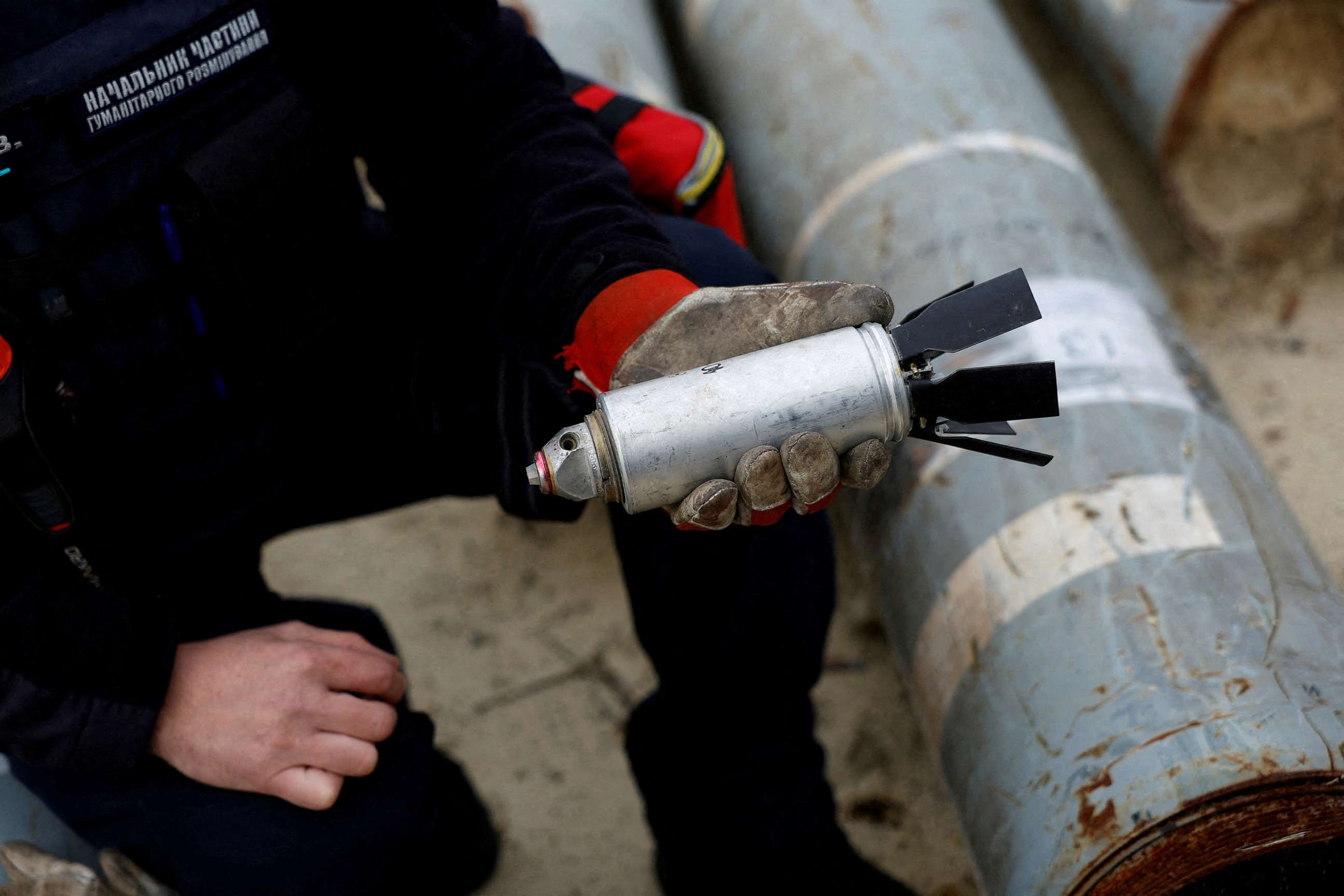What are cluster munitions? Biden defends decision to send controversial weapons to Ukraine
"These types of weapons are extremely dangerous," one researcher told ABC News.
President Joe Biden has decided to send U.S. stocks of cluster munitions to Ukraine amid its fight against Russia, defending the controversial move as urgently needed.
The weapons are part of a new military aid package worth up to $800 million.
The additional assistance comes as Ukraine pushes to recapture territory seized by Russia. President Volodymyr Zelenskyy told ABC News the counteroffensive was "going to plan" but he'd like to see progress happen even faster.
Zelenskyy said any needed equipment supplied to Ukraine will help his troops "to move faster, to save more lives, to stand our ground for a longer time."
But the decision to send cluster munitions to Ukraine isn't without concern, as human rights groups cite the danger they pose to civilians and numerous countries have banned them for more than a decade.
"We recognize cluster munitions create a risk of civilian harm from unexploded ordinance," national security adviser Jake Sullivan told reporters. "This is why we deferred the decision for as long as we could. But there is also a massive risk of civilian harm if Russian troops and tanks roll over Ukrainian positions and take more Ukrainian territory and subjugate more Ukrainian civilians because Ukraine does not have enough artillery. That is intolerable to us."
Biden on Friday also defended the action as necessary, telling ABC News' Elizabeth Schulze Ukraine is "running out of ammunition."

Still, the president told CNN's Fareed Zakaria it was a "difficult decision" to make.
Here's what to know about the weapons.
What are cluster munitions?
Cluster munitions scatter unguided submunitions, or bomblets, as small as 20 kilograms over a large area, maybe the size of several football fields. The U.S. last used them during the invasion of Iraq in 2003.
The weapons can be fired from aircraft or from the ground. Depending on the type used, anywhere from dozens to 600 bomblets may be released at a time, according to the International Committee of the Red Cross.
"These types of weapons are extremely dangerous," said Richard Weir, a senior researcher in the Crisis and Conflict Division at Human Rights Watch. Weir noted there are various kinds of submunitions, some are designed to penetrate armor or concrete while others are made to unleash as many fragments as possible against troops.
A U.S. defense official told lawmakers last month they believed such weapons "would be useful" for Ukraine, "especially against dug-in Russian positions on the battlefield."

But cluster munitions also pose significant risk to civilians as they are indiscriminately spread out over an area, and some release bomblets that fail to explode upon impact and can detonate much later -- even decades later.
"These are very nasty, destructive weapons for use on the battlefield," Daryl Kimball, the executive director of the Arms Control Association, told ABC News. "They are also particularly harmful for friendly soldiers as well as civilians after a conflict is over because the cluster munitions of all kinds have a failure rate."
The Pentagon said Friday they will send their most modern dual-purpose improved conventional munitions (DPICMs) that have a failure rate or "dud rate" of 2.35% or less. Undersecretary of Defense for Policy Colin Kahl said they have hundreds of thousands of those rounds available.
Kahl contrasted that figure with the failure rate of the cluster munitions being used by Russia against Ukraine, which he said is somewhere between 30 to 40%.
But Kimball said those working in the arms control field believe the failure rate of those munitions "in the U.S. stockpile are probably higher when it comes to actual wartime conditions."
When asked if the dud rate studies conducted by the Department of Defense on the munitions being sent to Ukraine will be made public, Kahl said those reports are classified but they have "high confidence" in the numbers.
Why are they controversial?
More than 100 countries have essentially banned cluster munitions. Governments that signed onto the "Convention on Cluster Munitions" in 2008 committed to never using, producing or stockpiling cluster munitions.
Russia, Ukraine and the United States did not sign the treaty, though most NATO nations did.
"They can injure or kill people who are just going about their daily lives -- children playing in playgrounds, people tending to their land," Weir told ABC News.
"In that sense, they act just like landmines," Weir said. "So it's the severe civilian harm associated with these weapons that makes them so controversial."
Officials said Ukraine gave assurances to minimize the risk to civilians, including a pledge not to use them in urban areas, and will commit to post-conflict demining efforts to find any undetonated munitions that pose a threat.
"I'm as concerned about the humanitarian circumstance as anybody, but the worst thing for civilians in Ukraine is for Russia to win the war," Kahl said. He added that the U.S. will monitor how the systems are being used and whether the Ukrainian assurances are being met.

Human Rights Watch previously called on both Russia and Ukraine to stop using cluster munitions.
Weir said cluster munitions were involved in one of the worst incidents of civilian casualties during the war so far: the attack on the Kramatorsk train station in April 2022. At least 50 people died and more than a hundred were injured, ABC News reported at the time.
"That tore people's bodies apart and injured people all around the train station," he said. "But this plays out again and again and again in regions all over Ukraine where there's fighting and where we've documented the use of various types of submunitions."
-ABC's Luis Martinez contributed to this report.




